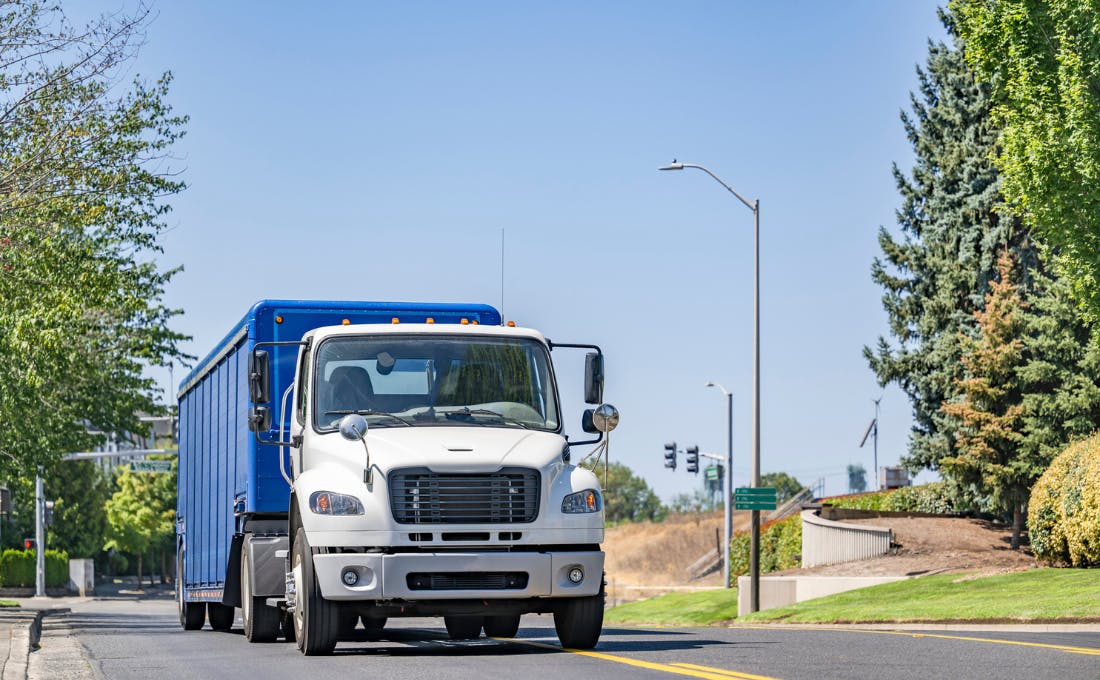9 Innovative Strategies for Beverage Distribution
Beverage distribution is a critical component of the food and beverage supply chain, encompassing the processes involved in transporting beverages from manufacturers to retailers and ultimately to consumers. This sector includes a wide range of products, from soft drinks and juices to alcoholic beverages and bottled water. As consumer preferences evolve and competition intensifies, optimizing beverage distribution has become essential for companies looking to enhance efficiency, reduce costs, and improve customer satisfaction.
The beverage distribution landscape is characterized by unique challenges, including managing perishable products, navigating regulatory requirements, and responding to fluctuating demand. Distributors must also contend with the complexities of multi-channel distribution, where products are delivered to various outlets, including grocery stores, restaurants, bars, and convenience stores. To succeed in this dynamic environment, beverage distributors must adopt innovative strategies and leverage technology to streamline their operations.
For those looking to deepen their understanding of these dynamics, our Comprehensive Guide to Food and Beverage Distribution offers valuable insights and strategies.

What Strategies Can Optimize Your Beverage Distribution?
Optimizing your beverage distribution pipeline involves implementing a range of strategies designed to enhance efficiency and improve service delivery. Here are some key strategies that can help beverage distributors achieve their goals:
1. How Can Route Optimization Improve Efficiency?
Route optimization is a crucial strategy for improving beverage distribution efficiency. By using advanced route optimization software, distributors can analyze delivery routes based on factors such as traffic patterns, delivery windows, and vehicle capacities. This analysis enables companies to determine the most efficient routes, reducing fuel costs and improving delivery times.
Benefits of route optimization include:
- Cost Savings: By minimizing travel distances and time, distributors can significantly reduce fuel expenses.
- Increased Productivity: Optimized routes allow drivers to complete more deliveries in less time, maximizing their productivity.
- Enhanced Customer Satisfaction: Timely deliveries lead to happier customers, fostering loyalty and repeat business.
2. How Can Technology Enhance Inventory Management?
Effective inventory management is essential for beverage distributors to ensure that products are available when customers need them. Implementing advanced inventory management systems (IMS) can help distributors track stock levels, manage reorder points, and reduce waste.
Key features of an effective IMS include:
- Real-Time Tracking: Distributors can monitor inventory levels in real-time, allowing for better decision-making and reducing the risk of stockouts.
- Automated Reordering: Automated systems can trigger new orders when stock levels fall below a certain threshold, ensuring that products are always available.
- Expiration Date Management: For perishable beverages, managing expiration dates is critical. An IMS can help prioritize the sale of products nearing their expiration, minimizing waste.
3. What Are the Best Practices for Optimizing Warehouse Operations?
Efficient warehouse operations are vital for beverage distribution success. Distributors should focus on optimizing their warehouse layout, processes, and technology to improve efficiency.
Strategies for optimizing warehouse operations include:
- Streamlined Layout: Organizing the warehouse to minimize travel time for picking and packing can enhance productivity. Grouping similar products together can also speed up the picking process.
- Automated Picking Systems: Implementing automated picking systems, such as voice picking or robotic systems, can reduce labor costs and improve accuracy.
- Cross-Docking: This strategy involves transferring products directly from inbound to outbound transportation without storing them in the warehouse. Cross-docking can reduce handling time and improve delivery speed.
4. How Can You Enhance Customer Communication?
Effective communication with customers is essential for successful beverage distribution. Distributors should leverage technology to keep customers informed about their orders, delivery schedules, and any potential delays.
Key communication strategies include:
- Real-Time Tracking: Providing customers with access to real-time tracking information allows them to monitor their orders and plan accordingly.
- Proactive Notifications: Sending notifications about delivery status, delays, or changes can help manage customer expectations and improve satisfaction.
- Feedback Mechanisms: Implementing feedback mechanisms, such as surveys or customer service hotlines, allows distributors to gather insights and make improvements based on customer input.
Case Study: How Did a Leading Player in the Beverage Distribution Sector Elevate Their Logistics?
To illustrate the effectiveness of optimization strategies in beverage distribution, let’s examine a case study of a successful beverage distributor that implemented innovative logistics solutions.
The company, a mid-sized distributor specializing in craft beers, soft drinks, and bottled water. With a growing customer base and increasing demand for their products, the beverage distributor faced challenges in managing their distribution operations efficiently.
What Challenges Did the Beverage Distributor Face?
The company encountered several challenges, including:
- Inefficient Routing: The company struggled with long delivery times and high fuel costs due to suboptimal routing.
- Inventory Management Issues: Fluctuating demand led to stockouts of popular products, resulting in lost sales and dissatisfied customers.
- Warehouse Inefficiencies: The warehouse layout was not optimized for quick picking and packing, leading to delays in order fulfillment. The combination of these challenges hindered The beverage distributors ability to meet customer expectations and maintain a competitive edge in the market.
What Solutions Did They Implement?
To address these challenges, the beverage distributor implemented the following solutions:
- Route Optimization Software: The company adopted advanced route optimization software that analyzed delivery routes and provided real-time updates. This software enabled beverage distributor to reduce delivery times by 20% and cut fuel costs by 15%. The dynamic routing capabilities allowed for adjustments based on traffic conditions and last-minute changes, ensuring timely deliveries.
- Advanced Inventory Management System: The company implemented an inventory management system that provided real-time visibility into stock levels across their warehouses. This system included automated reordering features, ensuring that popular products were always in stock. As a result, the distributor reduced stockouts by 30% and improved overall inventory turnover.
- Warehouse Optimization: The company redesigned its warehouse layout to streamline operations. By grouping similar products together and implementing automated picking systems, the beverage distributor improved picking efficiency by 25%. Additionally, they adopted cross-docking practices, which reduced handling time and sped up order fulfillment.
- Enhanced Customer Communication: The beverage distributor invested in a customer communication platform that provided real-time tracking information and proactive notifications. Customers could easily monitor their orders, leading to increased satisfaction and loyalty. The company also established feedback mechanisms to gather insights from customers, allowing them to make continuous improvements.
What Results Did the beverage distributor Achieve?
The implementation of these optimization strategies led to significant improvements for the beverage distributor:
- Increased Efficiency: The combination of route optimization and warehouse enhancements resulted in faster delivery times and improved order accuracy.
- Higher Customer Satisfaction: With better communication and fewer stockouts, customer satisfaction scores increased by 40%.
- Cost Savings: The company realized a 20% reduction in overall distribution costs, allowing them to reinvest in growth and expand their product offerings.
The implementation of these optimization strategies led to significant improvements for the beverage distributor: increased efficiency, higher customer satisfaction and significant cost savings.
What Future Innovations Are on the Horizon for Beverage Distribution?
As the beverage distribution landscape continues to evolve, several innovations are on the horizon that could further enhance efficiency and effectiveness. Here are some key trends to watch:
1. How Will Automation and Robotics Transform Beverage Distribution?
The use of automation and robotics in beverage distribution is expected to grow significantly. Automated picking systems, robotic delivery vehicles, and drones for last-mile delivery are becoming more prevalent. These technologies can reduce labor costs, improve accuracy, and speed up the delivery process.
2. What Role Will Artificial Intelligence and Machine Learning Play?
Artificial intelligence (AI) and machine learning are poised to revolutionize beverage distribution by providing advanced analytics and predictive capabilities. These technologies can help distributors forecast demand more accurately, optimize inventory levels, and enhance route planning. By leveraging AI, companies can make data-driven decisions that improve operational efficiency.
3. How Will Sustainable Practices Impact the Industry?
Sustainability is becoming increasingly important in the beverage industry. Distributors are exploring eco-friendly packaging options, optimizing transportation routes to reduce carbon footprints, and implementing energy-efficient practices in warehouses. As consumers demand more sustainable products, distributors that prioritize sustainability will gain a competitive edge.
4. What Innovations in Data Analytics Can Be Expected?
The use of data analytics in beverage distribution will continue to expand. Distributors can leverage data to gain insights into customer preferences, market trends, and operational performance. By analyzing this data, companies can make informed decisions that drive growth and improve service delivery.
5. How Will E-commerce Integration Change Beverage Distribution?
The rise of e-commerce has transformed the beverage distribution landscape. Distributors are increasingly integrating e-commerce platforms into their operations, allowing customers to place orders online and track deliveries in real-time. This integration enhances customer convenience and opens new sales channels for distributors.
Conclusion
Optimizing your beverage distribution pipeline is essential for success in a competitive market. By implementing strategies such as route optimization, effective inventory management, and enhanced customer communication, beverage distributors can improve efficiency, reduce costs, and enhance customer satisfaction.
The case study of The beverage distributor illustrates the tangible benefits of adopting innovative logistics solutions and highlights the importance of continuous improvement in distribution operations. As the industry evolves, staying informed about future innovations and trends will be crucial for distributors looking to thrive in the beverage distribution sector.
By embracing technology and optimizing their operations, beverage distributors can position themselves for long-term success, ensuring they meet the demands of an ever-changing market while delivering exceptional service to their customers.
Take the Next Step
Are you ready to transform your beverage distribution operations?
Contact us today to learn more about how ORTEC can help you optimize your delivery network.
